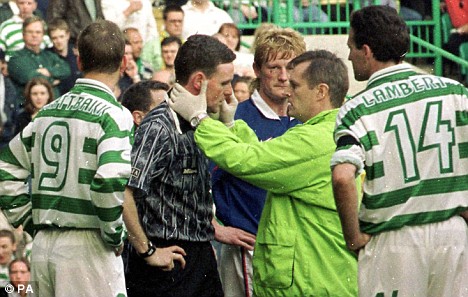First time contributor, Sean Murphy, offers the following thoughts….
It was the perfect match. Stefan Johansen was to be reunited with his former manager Ronny Deila. The man who took a talented, yet ill disciplined young winger from Bodø/glimt and turned him into a key man in the midfield for both Norway, and championship winning Strømsgodset, was joining him at Celtic, not 6 months after he had arrived himself.
Fast forward four months to early October, and all was not going to plan. Celtic had varied between unconvincing and awful in Europe and more worryingly, lay sixth in the Scottish Premiership, having suffered a 1-0 defeat to league leaders Hamilton at Celtic Park, taking the points dropped tally up to ten in eight games. Many fans were growing increasingly frustrated with the new manager.
One common complaint was that Deila was blindly picking Johansen as part of a central midfield two out of loyalty, when in truth he had been largely ineffective. It was a fair point, Celtic looked far too open in midfield, which was in part due Johansen’s natural urge to press high up the park, leaving his midfield partner exposed.
Previously, Neil Lennon’s time as manager had been plagued with an unsuccessful search for a suitable number 10. Experiments with Ki, Paddy McCourt and James Forrest in the position had all failed. They could do a job, but clearly their talents lay in other areas of the pitch. Despite his imperfections in the role, Kris Commons was by far the most effective option Lennon had in the position, and until mid October, Ronny Deila was no different.
A large part of the problem was that the traditional number 10 that Celtic had been looking for was a dying breed. Between five and ten years ago, the traditional, Riquelme type, number 10 had been replaced with a more complete player in the mould of Luka Modric, or more recently Mario Götze. For almost five years, Celtic had been searching for the type of player that was increasingly scarce, and no longer a part of top level European football.
Wether it be luck or inspiration, Ronny Deila made probably the key tactical switch of his time as Celtic manager for a trip to Dingwall, branded by many as a must win game. He replaced an injured Kris Commons with Charlie Mulgrew, moving Stefan Johansen into an advanced midfield role.
Since that day at Ross County, where Johansen was key in a 5-0 win, Celtic have managed a major upturn in league form, were somewhat unfortunately knocked out of Europe by Inter Milan, and look on course to complete a domestic treble. Individually, the Norwegian midfielder has gone from strength to strength, becoming an integral part of Ronny Deila’s Celtic team. He now performs a complex, multi-functional role which has three main facets.
1) In deeper areas he creates a central midfield three with the two holding players during the battle for possession in the middle of the park. On the attack, he looks to pick up the ball in just behind the opposition midfield and either driving towards defenders or looking to play an accurate ball over the top.
2) Johansen carries out functions reminiscent of increasingly common “central winger” role. The purpose of this is to either overload the opposition in wide areas, or more commonly, to create space in central areas for players like Stuart Armstrong and Kris Commons who start in wide areas to drift inside to their natural area of the field.
3) Perhaps Johansen’s greatest contributions come in central areas, high up the pitch. Having created problems earlier on in the season, his natural urge to press the deep midfielders and centre backs of the opposition is key to his role, often stealing the ball in dangerous areas, forcing misplaced passes and showing the opposition into areas crowded with Celtic players . He has also developed a knack for getting beyond the striker into goal scoring positions, best exhibited against Aberdeen and St. Johnstone.
This triple threat contribution is largely unique, even in modern football. The 2012 Champions League semi-final between Bayern Munich and Real Madrid, hinged on the importance of this position. Jose Mourinho’s decision to go with Mesut Özil, a top class player in regard to functions 2 and 3 (as described above), over a player who would carry out the first function cost his team control of the midfield, and as a result the tie. Ronny Deila wouldn’t face such a problematic desicion with a player as complete as Johansen.
Johansen, singled out for early season criticism, has now been made the favourite by many for Scottish Premiership player of the year. Celtic are likely to have a struggle on their hands to keep Johansen for much longer, particularly if he gets the chance to showcase his talent in next season’s Champions League. His transformation from midfield misfit to the complete modern attacking midfielder could see the man from Norway’s beautiful north in high demand from sides across Europe looking for their own perfect 10.




